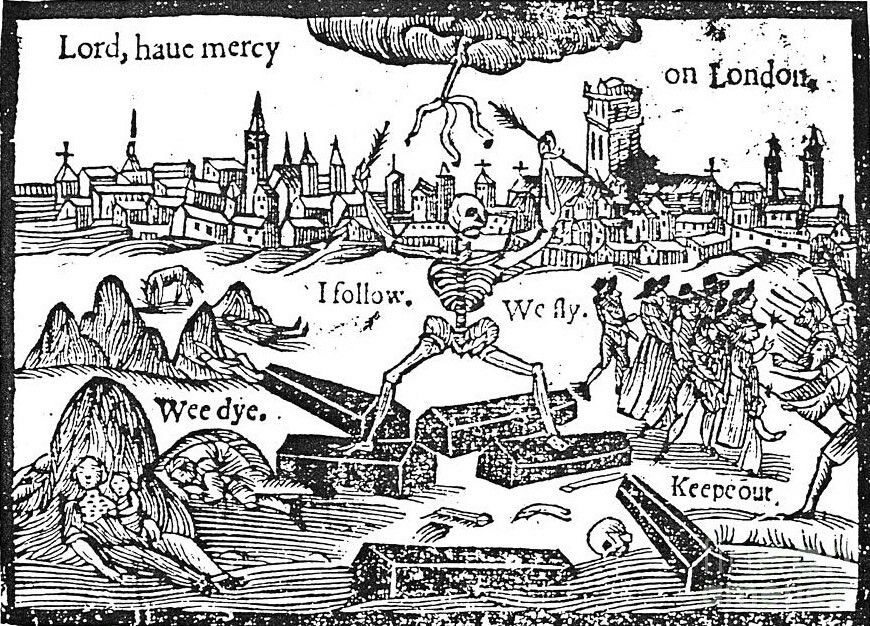Rus Hoelzel at the University of Durham, UK and his colleagues looked at the mitochondrial DNA from human remains at 4th and 11th century archaeological sites in England, and compared them to samples from the modern population stored on DNA databases such as GenBank. They found there was more variation in the ancient mitochondrial DNA sequences than in modern sequences.
Hoelzel thinks random genetic drift may have lowered genetic diversity naturally. But the large unexpected drop in diversity was more likely to have been caused by population crashes following major outbreaks of the Black Death in England during the 1340s and the 1660s.
"The main factors in support of a role for plague are the timing and the fact that it affected different families [to a differing degree]," says Hoelzel.
Vulnerable families
The Black Death did not reach England until the mid-14th century. No-one knows exactly what caused it, with the bubonic plague bacterium Yersinia pestis, and various viruses all having been implicated at some point.
However, it is known that plague affected some families more than others, so their mitochondrial DNA would have been less common among survivors, Hoelzel says.
"I'm not at all surprised with the result," says Susan Scott at the University of Liverpool, UK.
"We're talking about one of the worst disasters humans have faced. It destroyed about half the population of Medieval Europe in three years."
But the effects may have been most severe in northern Europe. Hoelzel and his team note that DNA sequences from modern Italians are just as variable as those from their 7th century ancestors.
According to Hoelzel, this finding may reflect migration patterns after the Black Death, rather than a less severe outbreak in southern Europe. "Throughout the recent past, there have been movements from the Middle East into southern Europe, and the Middle East population retains a great mix and diversity," he says.
Effective measures
Scott has a different theory. "We have to listen to the people who were suffering at the time," she says. "The disease came in from Sicily and seemed to settle in France where it was endemic for almost 200 years."
France was probably the source of the periodic epidemics elsewhere in Europe, and these were infrequent in Italy because of the vigilant actions of the Italian authorities, Scott thinks.
Comment: It's certainly possible that a lack of quarantining and public hygiene were factors in France getting hit hardest.
"They closed down ports and stopped people travelling at the first sign of infection," she says. "And they had a 40-day quarantine period. I think the Black Death was the result of a virus that probably had a 37-day incubation and infection period, so the Italian quarantine period was just right."
"In England, King Henry VIII reduced [the quarantine period] to 30 days at one point, and the country suffered," says Scott.
Journal reference: Biology Letters (DOI: 10.1098/rsbl.2007.0269)




Considering the rapacious history of England AFTER the plague, one has to wonder just what genetics were optimized to survive.